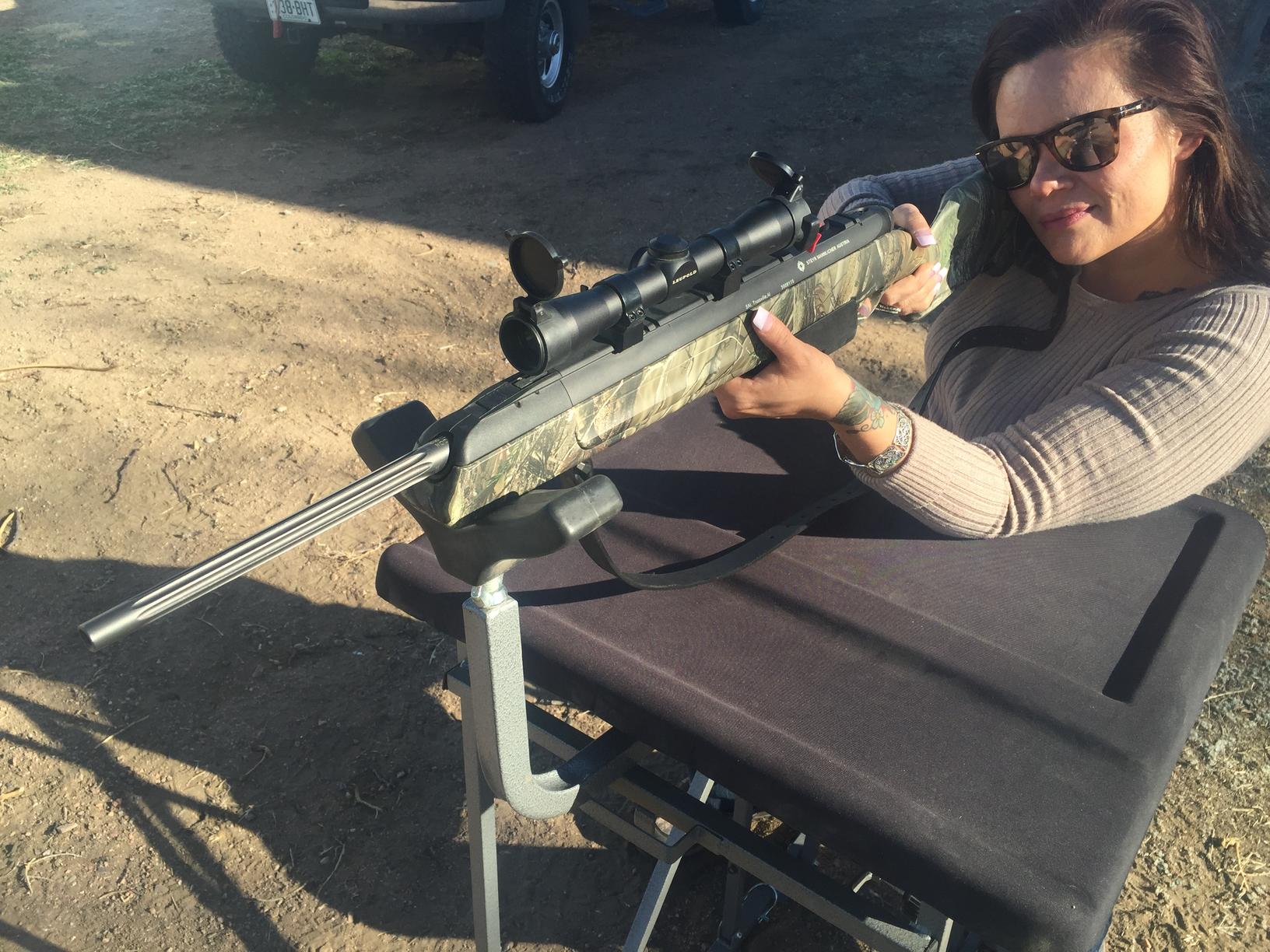Email a copy of 'Basic Rifle Marksmanship- Part 2, by Mark Bunch' to a friend
14 Comments
- Ad The Good News About Nuclear Destruction.The lethality of all nukes can be reduced by 90% when you know beforehand what to do and not do.
- Ad L3 UNFILMED WHITE PHOSPHOR COMMERCIAL GRADE NIGHT VISION PACKAGEHuge Savings $400 off normal cost!


Well done! Perhaps the most concise article I’ve read about the subject. I will be using this for new shooters!
Very good advice on becoming a better shooter.
From my competition days I am reminded that extreme focus is required to make those long shots. After everything else gets dialed in, and it’s just you looking down the tube, watching the mirage, settling in to that still, even breath, and shutting out the rest of the world, that you start to slowly crush the trigger inward. It is amazing how stress-relieving a match can actually be. Sure, there’s lots of things to account for before the first shot is even fired. But the way the event draws the shooter away from the things of the world, all the stress at work, the bills at home, the pain in your knees, the heat of the day, they are all swept away. It is an escape of sorts. It is incredible just how relaxed you become. You’d think it would be just the opposite. Other shooting events are more stressful, but long range shooting, just like big game hunting, pulls us into a different reality.
This article contained some good basic information and I enjoyed reading it. A point of clarification is that a bullet does not arc up as it exits the barrel unless the barrel itself is pointed up. As soon as a bullet exists the barrel,gravity pulls it to the earth.
Not so sure about this,” Once your round leaves your rifle barrel, it will rise above the bore… ”
It will definitely begin dropping as soon as it leaves the barrel, less so at first, but as you point out, more and more as the distance increases. That’s just the physics of gravity.
Otherwise this has been a fine and exceptional offering. Many thanks for taking the time to share your years of deep experience.
” Once your round leaves your rifle barrel, it will rise above the bore” Not so! It rises above the
line of sight.
As a fledgling engineer, let me state the the gravitational constant is 9.8 meters per second SQUARED. If the object falls for 2 seconds, the distance fallen is 9.8 meters time 4 (2 squared. Ballistic calculators use this constant to come up with bullet drop over distance. Other than this misstatement, the article carries many good tips.
I politely suggest you check your kinematics calculations. Mr. Metcalf states it correctly below, in terms of vertical speed of the projectile (assuming 0 m/s vertical speed at the muzzle, or barrel horizontal).
Great article. Point of clarification; the acceleration of gravity (for gravity is a change in velocity applied over time) on all objects with mass is -9.80665 meters per second squared. Or in other words, after 1 second, the object will be falling towards the center of the earth at 9.80665 meters per second. After 2 seconds, it will be falling towards the center of the earth at 19.6133 meters per second, and so on.
Also known as the 32-feet-per-second-per-second rule. So, 32 feet in the first second, and 64 fps of downward velocity by the end of the second second. So if your rifle covers 1,000 yards in 2 seconds, the average downward velocity will be the average of a curve, which is a trick to figure.
For M2 Ball (150 gr. Flat-Base FMJ @ 2750 fps), my calculator indicates about 579 inches of actual drop at 970 yards, which it reaches in 2.027 seconds. That would put the bullet about 60 minutes of angle below the bore. But with a 2-inch sight height, and 200 yard zero, it is more like 53 MOA below the crosshair.
And yes, the line of sight is always at an angle to the bore. I’m surprised how many inches of actual bullet drop can be crammed into hold-under and hold-over, with a 2-inch sight-height and a mid-range hold-under of 2 inches! It’s about 11 inches of actual bullet drop, with all impacts within 2 inches of point of aim. That would be typical of .30-06 (M2) out to about 230 yards.
GREAT article, always the nit pickers though. Keep up the good work! Looking forward to more!
All the engineering critique makes me smile. And no one discussed the salient issue here with the highest probable cause for misses. I got trained in all the artillery science which impacts ballistics like counter-rotation, air temperature, density, humidity, crosswinds, altitude, attitude, observer location, projectile weight and design, propellant type, propellant temperature, and much more. But what I learned in the biathlon competition is far more pertinent and IS addressed in your article: repeated correct and unchanging cheek weld and positioning of body and weapon, and finally controlling of heart rate and breathing. Nothing like cross country skiing as hard as you can go and then stopping to shoot in 15 and 20 KM races ever focused the techniques as well for me as that sport!
Carl, you’ve got the right idea but check your formulas. Speed (in this case vertical speed) = Acceleration times Time. Distance traveled (vertically) = 1/2 times Acceleration times Time times Time. Of course In the case of a bullet on any object falling Acceleration is the Gravitational Constant of 9.8 meters per second per second.
Mark Bunch-
Apologies for my pedantic comment on shot drop. Especially since I learned much from your post here, and could learn worlds more from you.
Thanks for taking the considerable time to create these entries. I and certainly a lot more folk are grateful.